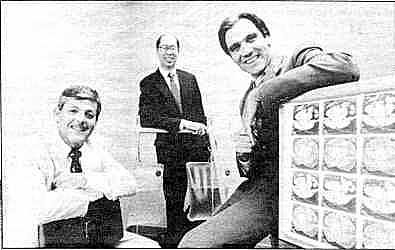Better than one billion dollars is spent annually for hospitalized patients requiring pelvic traction. With more and more insurance companies balking at footing the bill for lengthy hospital stays when home health care could be an option, it was only a matter of time before someone came up with a pelvic traction device that was simple to use, affordable and could be set up easily in the home. Dr. Joseph Kott, a Metairie Neurosurgeon, had seen the expense incurred by many of his patients who needed pelvic traction, but it was not until he injured his own back lifting weights that he got the idea to experiment with a portable device which could be used at home. Using his professional knowledge of the spine, Kott built a traction unit from scratch. He went to a hardware store and bought hollow tubing to attach to the frame he had taken from a TV table. Working from a drawing he had done himself, Kott constructed a unit which would hold the traction weights and counterbalancing weights filled with water. Once he had finished building the unit, which was usable with any bed, Kott was convinced enough of its market potential to apply for a U.S. patent. "I figured that if the U.S. patent office thought enough of the unit to grant a patent, then I had something," Kott says. The U.S. patent office did think enough of the device to grant a patent, and it came through on July 1. Realizing the potential of what he was about to embark on, the neurosurgeon approached a friend, Dr. Stephen Depner, a Raceland internist, and offered him a partnership. Depner and Kott, who had been friends from elementary school through residency at Charity, each put up $12,000 to get the venture off the ground. "But Stephen refused to put any more of his money into the venture until we hired a professional to carry out a marketing study on the unit," Kott says with a laugh. The two doctors, conceding their limited knowledge of complex marketing strategies, hired David Seigel, a Harvard MBA and chief financial officer of a local marketing firm, to carry out the research. The men decided the survey should be targeted to three segments: physicians in appropriate specialties to see if they would recommend it to their patients; insurance companies to see if they would cover it in their policies; and health maintenance organizations to see if they would offer it in their plans. The survey came back with overwhelmingly positive responses from all three groups. "The physicians were enthusiastic about prescribing it for their patients," Kott says, "and the insurance companies and HMOs, realizing that it could save them as much as 80 percent over the hospital costs, were ecstatic." Results of the marketing research survey indicated that the potential could be as much as 500,000 uses a year. At a retail price of $450 per unit (about $150 less than what some of the current units were going for), the total market was estimated to be in excess of $200 million. Suddenly, Kott and Depner were struck with the realization of what they were getting into, and in what Kott calls "one of the smartest decisions we made," they recruited Seigel to manage their newly formed business, K&D Home Health Equipment. Kott's next step was to hire a technical consultant to perfect the design. "This professional design engineer took the kinks out of the unit and gave us the best possible embodiment of the invention," he explains. Next, on the advice of their patent attorney, Kott and Depner applied for an international patent. Currently pending, the patent will allow distribution of the unit in the European Common Market countries, Canada, Japan and Australia. Kott and Depner, who estimate it has cost them about $200,000 to bring the product to its current market status, will introduce the unit Sept. 21 at the Health Industry Distributors Convention which will be held in New Orleans. Following this, they will use a business plan which Kott wrote himself to market the device to physicians, hospitals and home health agencies. "The product has been cleared for marketing by the FDA," Kott says, "but we will initiate our marketing efforts in a conservative manner by going through established medical channels." Depner adds, "I see this as a major step toward alleviating certain back ailments without the need for hospitalization or surgical treatment." |
